Plectrantus and its cultivation
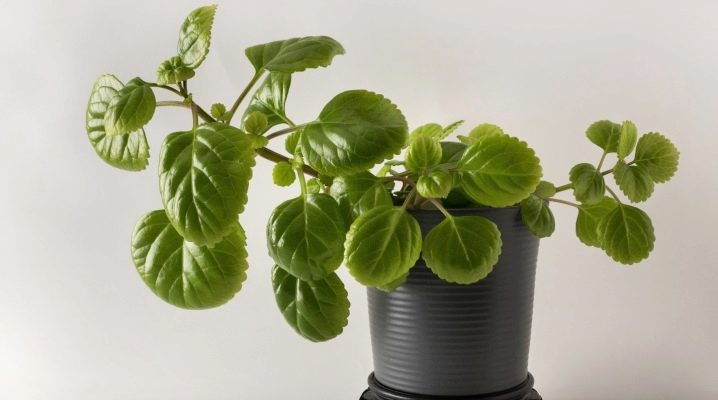
Plectrantus is a medicinal mint. The plant is really used both in medicine and in cooking, and it is quite possible to grow it at home. The second name of the culture is indoor mint. And, in addition to its unconditional usefulness, mint is distinguished by its unpretentious care, so even people about whom you cannot say "green hand" can grow it at home.

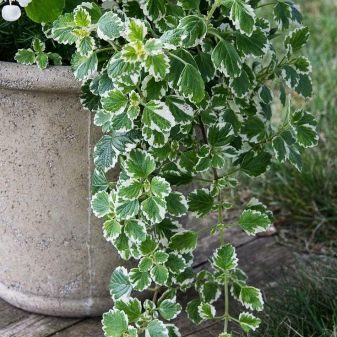
Description
The homeland of plectrantus is the tropics, somewhere near Limpopo this plant appeared. Now it is actively growing in India, Japan, Malaysia and Australia. In Scandinavia, where plectranthus is also found, it is called Swedish ivy.
Interesting points from the description of room mint:
-
grows quickly and multiplies easily;
-
its leaves are much more decorative than flowers;
-
looks great in the winter garden;
-
refers to ampelous plants;
-
leaves can be both matte and glossy;
-
stems grow in height up to a maximum of 45 cm;
-
there are many leaves on the shoots, most often emerald;
-
veins with a characteristic pattern on the leaves, which makes the culture decorative;
-
miniature flowers - blue, lilac or white, collected in umbrellas or spikelets;
-
It is better to cut off the buds, because the plant looks sloppy with flowers and loses its strength.

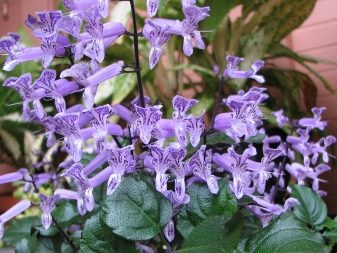
With chamomile and sage in the folk medicine cabinet, indoor mint has not yet been compared in popularity. But this is not an indicator of her medical capabilities: for colds and flu, tea with this mint helps to make a cough productive and get rid of a bad cold. The same tea boasts a mild sedative effect, it is good to drink it before bed. And also a drink will be useful for problems with the gastrointestinal tract, it also helps to get rid of nausea. It removes excess fluid from the body, it is even drunk with stones in the bladder and kidneys. Fresh leaves are applied to ulcers on the body and bite sites.
But at the same time, an allergy to bristle flower (another name of the plant) is not excluded, you need to be careful.
Otherwise, mint is excellent as a choice for a home plant with an unpretentious "character" and expressive decorativeness.
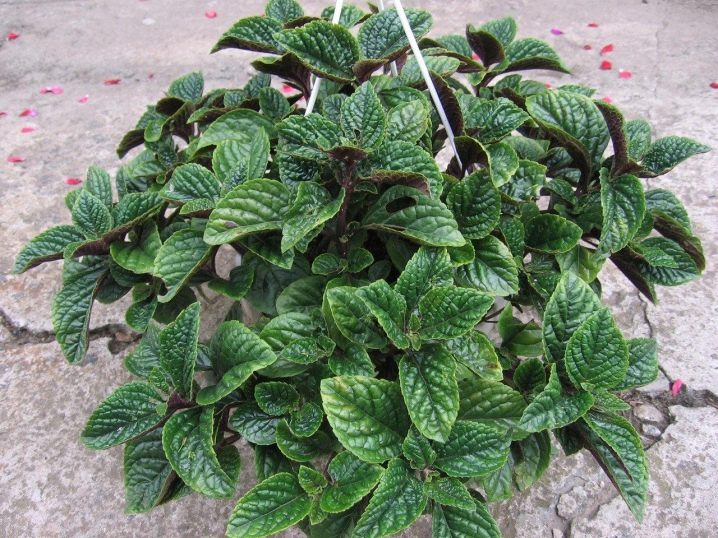
Types and varieties
There are several varieties of room mint, and the differences can be significant.
-
Coleus (Koleodes). Probably the most demanded flower is this one. And it also differs from the average plectrantus in height, it is even capable of growing up to a meter. The shrub consists of four-sided straight shoots, on the trunk, almost at the root, fluff is noticeable. The leaves of the plant are large and fleecy. Of the varieties of Coleus Plectrantus, it is worth highlighting "Marginatus".
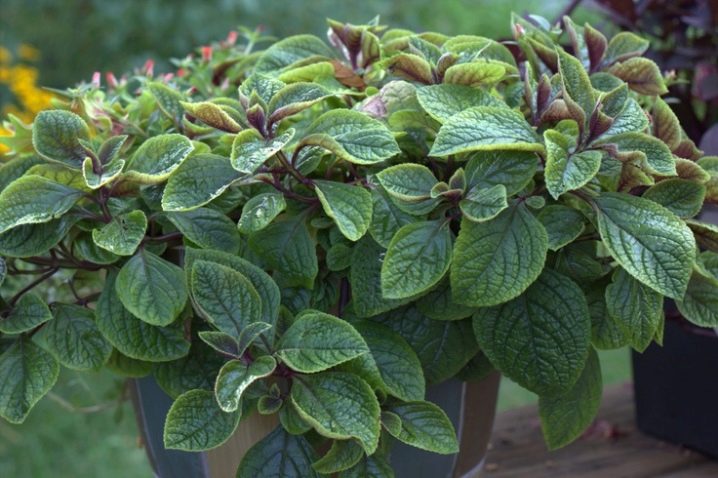
- Shrub... This species is often called the molar tree. It has a bright aroma and can easily scare off moths (it is often used for this). The stem has a downy, oval and wide leaves. When there is no flowering, the smell of the leaves intensifies, but during flowering, the aromatic plant smells more pleasant, softer.
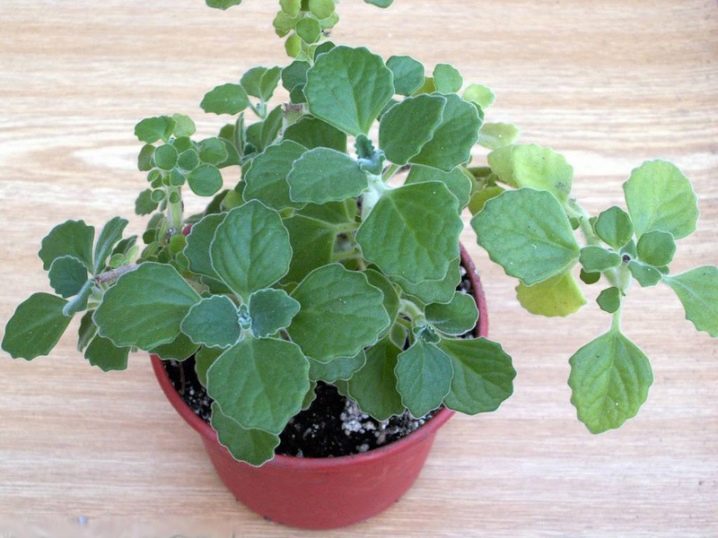
- Ertendahl... This species has a creeping stem that can be very long. The leaves are smaller than those of their counterparts, rounded in shape, with a blunt apex. This species blooms with faded lilac flowers, among the varieties is very popular "Uvongo".
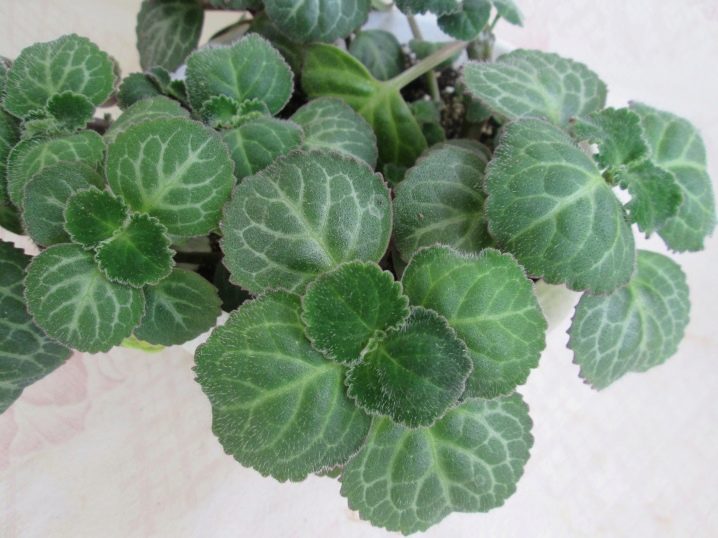
- Southern... Probably the most capricious view. He's Swedish ivy. Its stems are bent downward, and on them leaves with oblong petioles. Its aroma is weak.
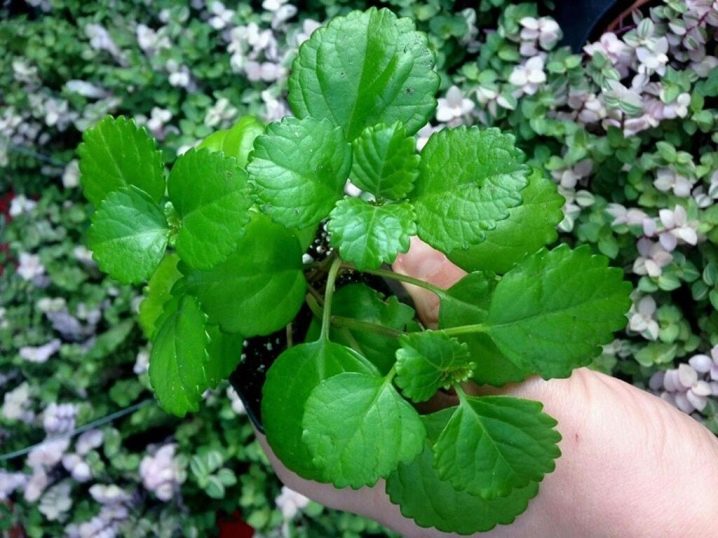
- Felt... Able to grow is simply unrealistic, an adult plant will have a lignified stem. The leaves are round and fleshy. The entire shrub is covered with villi, so it seems fluffy. Blossoms with purple flowers.

- Ernst... Another name is caudex. Relatively low, it grows up to half a meter in height. Blooms in white or blue-purple.

- Mona lavender... Refers to hybrids. Its shoots are brownish-brown, the foliage is ovoid, with denticles along the edges. On the front side, the leaf will be dark green and glossy, on the inside - fluffy, with a shade of purple.
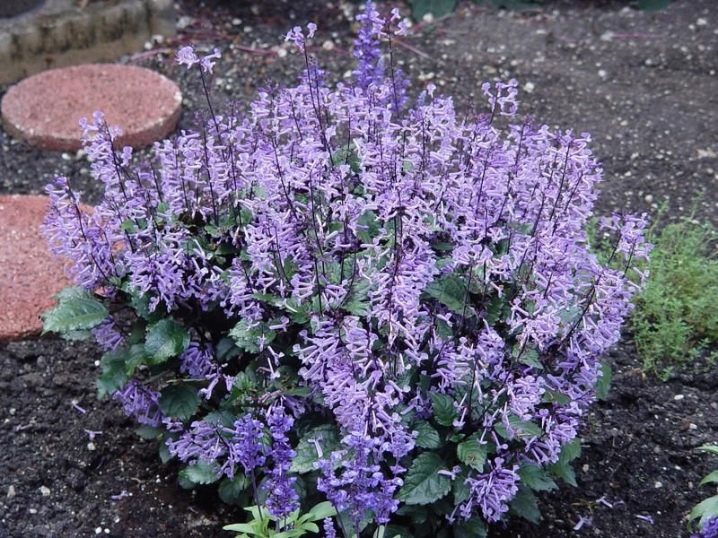
- Ciliated... Also applies to creeping species. The shoots have purple fluff. The hairs are stiffer here. The pile on the wrong side is present only near the edge.
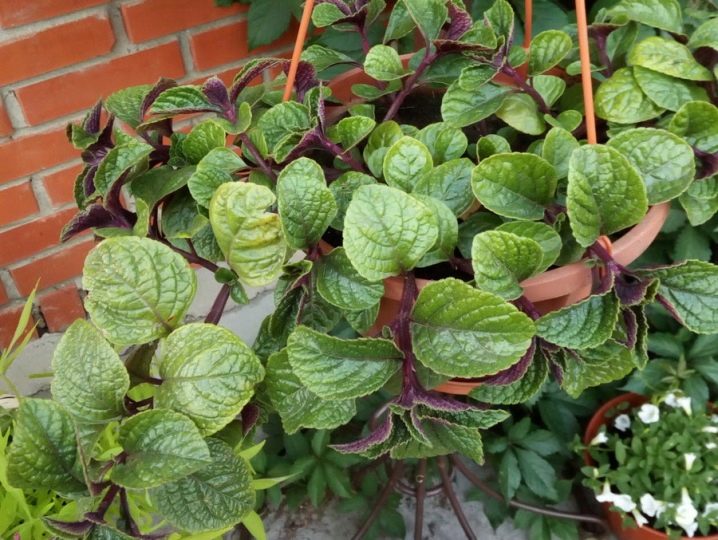
- Dubolistny... This plant is characterized by fleshy shoots, dark green leaves, as well as a serrated edge on them. In shape, the leaves, indeed, resemble leaf plates of oak, but with a silvery down. And it will already have a pronounced coniferous aroma, and not mint.
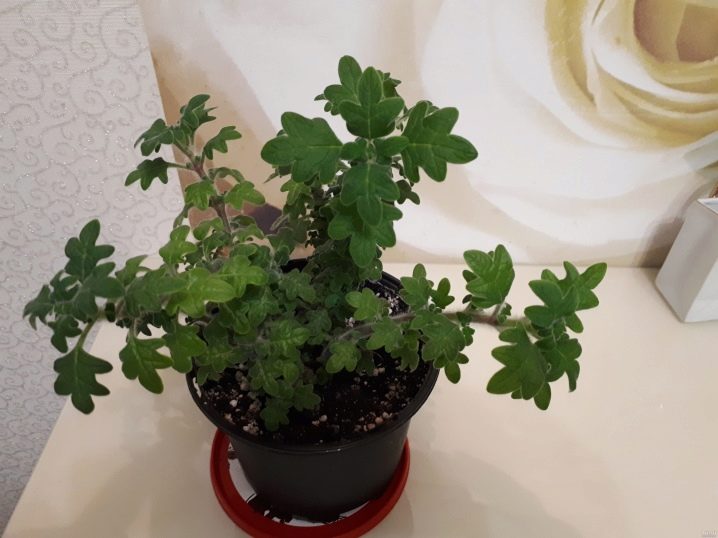
A plant of almost any species feels good all year round, it can winter on a glassed-in balcony, and it also has good immunity.
Landing
First you need to decide in which pot it is better to plant this mint. It should be proportional in length and width, because the root system of the plectrantus is powerful. But what the soil will be is not so important for unpretentious mint. However, she will like the porous and acidic substrate better. You can make your own soil, you can buy it in the store.
The prepared soil consists of:
-
peat;
-
turf;
-
land;
-
coarse sand;
-
deciduous humus.

The proportions are as follows: for 2 shares of peat, take 1 share of humus and turf, and then add half of the sand and earth each. There must be drainage in the pot - it can be gravel, expanded clay and brick chips. By the way, young shoots require an annual transplant, and so on, until the mint is 4 years old. And the next transplant will take place in another 4 years.
The plant will like it both in the apartment and in the garden. Yes, it can be planted outdoors, in greenhouses and greenhouses, growing mint is quite real. And in the spring, when the heat settles, it can be sent simply into the open ground.
But reproduction can be either by dividing, or by cuttings (very rarely "bind" to seeds). But more will be said about this.
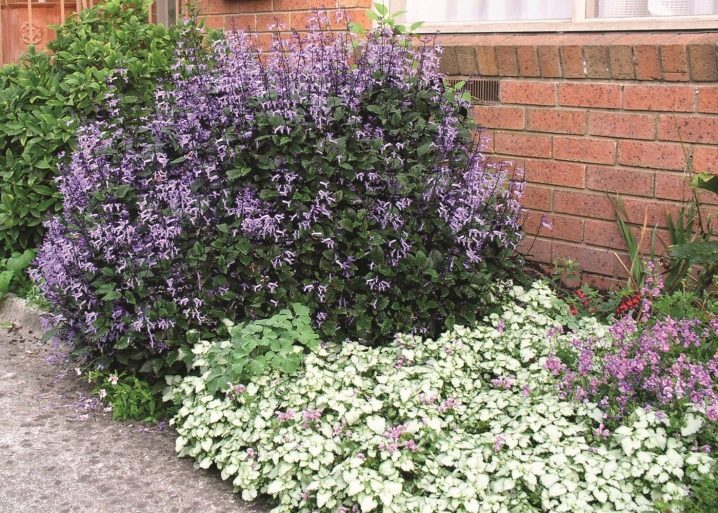
Care
After the plant has been purchased and brought home, it must be transplanted into a spacious container. In the one in which it is usually sold, there is definitely not enough space for mint. And then everything is simple - sufficient watering, bright light and feeding as needed.
Pruning
Sometimes the plectrantus needs pinching. And this usually happens due to active growth. This is the only way to grow a fragrant fluffy bush on the windowsill at home.
Old stems are necessarily cut, which contributes to the rejuvenation of the culture. So the stem will have new stems. And rejuvenation is usually carried out at the end of winter or in the first days of spring.
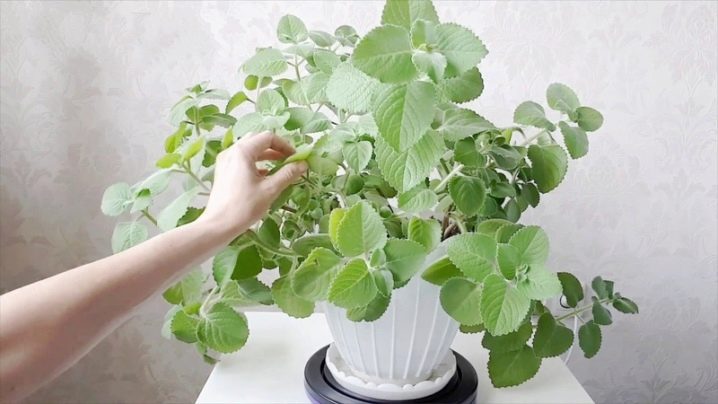
Watering
Mint leaves are usually terry, pubescent. Therefore, the water from the sprayer for spraying the plant is definitely not suitable. If the liquid gets on the leaves or stem, brown spots may appear on them soon. Watering is carried out exclusively in the zone of the root system. And it should be abundant. Strong drying of the soil must be excluded, not to allow an earthen crust to form. In winter, watering is reduced.
As a top dressing, complex fertilizers for indoor plants are suitable. And more often than once every 2 weeks, it is not necessary to feed the plectrantus. And winter time, as a dormant period, should not at all be combined with top dressing.
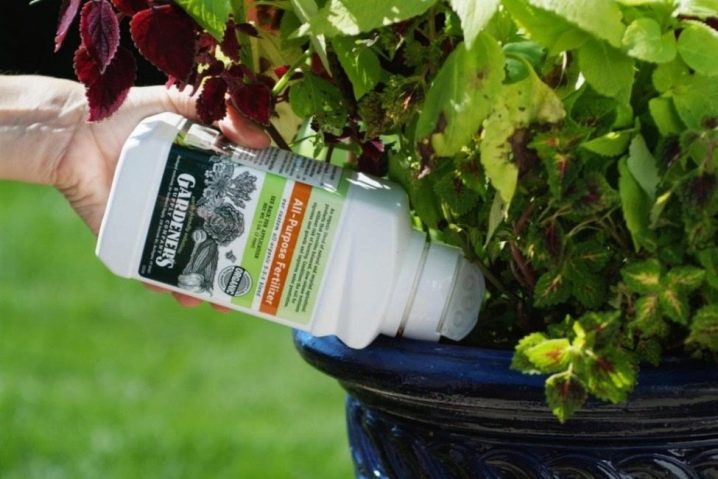
Transfer
As already stated, it is held every 4 years... Some sources indicate that once every 3 years, but more often it is definitely not necessary. And this procedure is carried out strictly by the transshipment method, because the separation of the root system must be excluded - for further cultivation, such an oversight is critical.
As for, for example, temperature and lighting, a temperate climate is good for a plectrantus. The main thing is that the flower does not grow during thermal shock, drops can seriously weaken the mint. She also takes a strong heat hard, as well as a strong cold, however. If the room temperature drops below 10 degrees, the mint begins to suffer. In terms of lighting, she is good in natural bright light. If there is not enough sun for the mint, the bush will begin to stretch excessively. And when the leaves turn yellow and fall off, the flower needs more sun.
The plant, by the way, can be turned to the light source in different directions, otherwise the bush will grow one-sided, that is, asymmetrical, ugly.
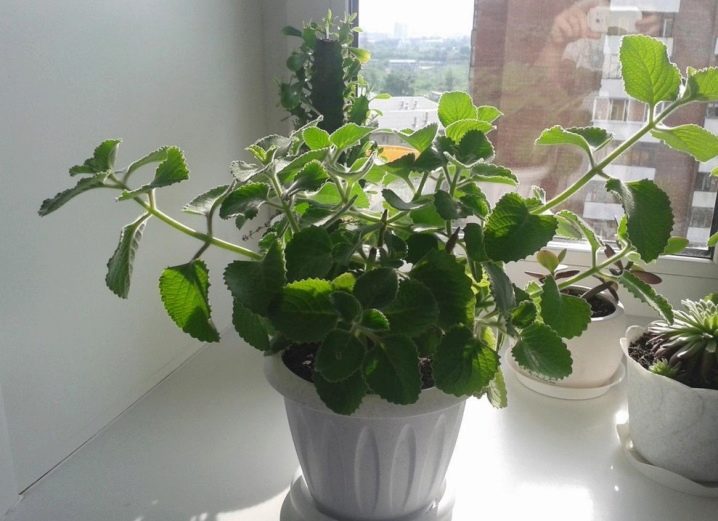
Reproduction
Cutting is the most popular breeding method for plectrantus. Cuttings can be rooted both in wet soil and in a container with water. And after rooting, they can be transplanted into containers with the correct soil, be sure to water abundantly. Landings are likely to require mini-greenhouses, for which you can use ordinary plastic bottles. And most importantly, the container should let light through. From time to time, the seedlings must be ventilated.
It should be noted that propagating indoor mint is easy, cuttings take root very quickly... After about 2 weeks, or even earlier, the sprout will become a bush and can grow on its own. The forecasts for such manipulations are favorable.
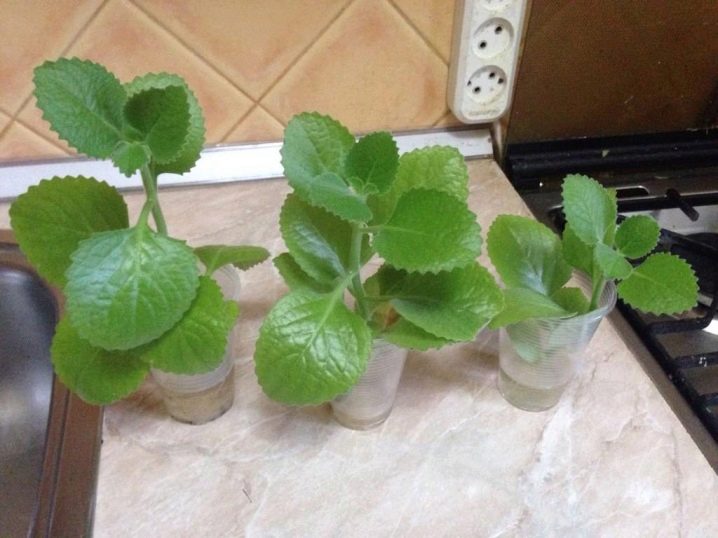
Diseases and pests
The most common disease of Plectranthus is downy mildew. And it happens with mint, if the owners have forgotten that they need to take care of it, or it grows in conditions of low temperatures and high humidity. To get rid of the disease, it is necessary to transplant the plant into a new disinfected soil, where the moisture conductivity indicators will be higher. As for pests, in this sense, mint is more often attacked by aphids, scale insects and mealybugs. Insecticides work well against everyone.
A plant becomes painful if its leaves turn yellow and wither. This happens more often if the mint freezes. If the shoots become unusually soft, as a result of which they droop, it means that the flower has little moisture, the earth in the pot is dry - the irrigation regime is adjusted. And if brown spots were found on the leaves, then, on the contrary, the soil is waterlogged.
Plectrantus, as you can often hear among the people, home-friendly plant... It wards off disease and attracts financial luck: this is why some owners try to plant bushes in different rooms. And sometimes this mint is planted in the same space with the lemon tree, because I really like the combination of these aromas.
The prospects are interesting, may the cultivation be successful!

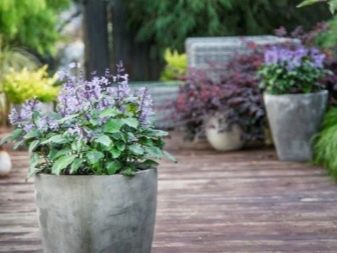













The comment was sent successfully.